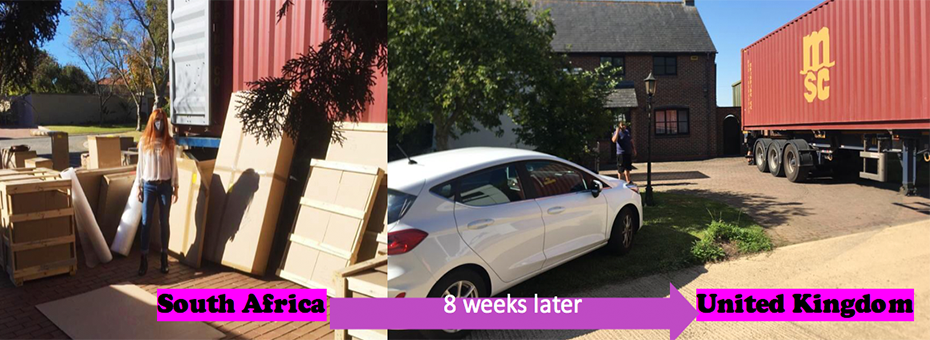Recently I relocated from South Africa to England with my family. And in true lean style, the minute we made the decision to move, I launched a mass reduction of unneeded items. First, a garage sale. Then, promoting items to neighbors. When that well ran dry, I moved online and sold A to Z items to Facebook strangers. Before the moving container arrived, I gave it one last push and downsized the balance of the dreaded unnecessary. Everything made it into the space and a year of prep and downsizing was complete!
The container made its way across the world to arrive last week – just-in-time I might add. Then the task of unpacking the needed things and placing them in easy-to-use locations began. I positioned the items that brought me joy and used KonMari techniques to help them fit nicely in the subtly different layout. Sitting back on the patio, enjoying the English country-side views with gin and tonic in hand, I breathed a long, satisfied sigh. Done.
And what’s the first thing I started doing on that patio? I signed up for Amazon Prime and downloaded the IKEA app, and gleefully populated my home again. Rugs, lamps, glasses…a garlic crusher…a vacuum cleaner (because a rechargeable one is crucial) …and many more (necessary?) items. I got a rush each time something arrived in record time. I zoomed off to Tesco and ALDI to fill up the pantry with an array of local produce, wine and condiments, to satisfy every whim and to enjoy my new-found love – the AGA.

I realized then what I had done. Studying and applying Lean for 25 years had not prepared me for the deeply-ingrained habits and thought processes that drive my thinking and action.
Zero inventory was never my goal – I have a family to feed and a busy schedule. But there’s no doubt that I was content in gathering items all over again, happy to feel the sense of comfort that comes with having more than you require. In industry, this manifests in just-in-case inventory, which leads to investing in capacity we don’t yet need (space, equipment, labour), and the associated costs in managing that excess – insurance, overdrafts and interest, management time, to name a few. I nearly invested in a chest freezer since the integrated one was too small. Thankfully,I paused before hitting “add to cart”.
Every organization has waste and excess. And much of it is avoidable. But our thinking sits at the core of this creation. The Lean movement created an impressive awareness for the Seven Wastes and has triggered many people to hunt for them. Ideally, we seek waste and tackle the causal factors sitting behind them. But we often stop at the superfluous. As inventory builds up, we observe causes hiding in the purchasing processes or in the long changeover times, for example, but it goes much deeper than that. How do we think about and act on broken, wasteful processes and systems? How do we measure success and what impact do we have on the downstream performance?
I am not taking a stab at leaders. I am saying that Lean Thinking emphasizes the responsibility to look inward at oneself before looking outward at what must change in the organization. This may sit in the fundamental thinking we have adopted regarding business and costs, but it also gets more personal in how we treat and nurture our talent. To do business in a new way, we have to think and act differently than before. And get comfortable challenging why we do things in a particular manner. In this way, the promise of Lean begins to prosper and deliver. Not just locally, but across industries too.
In conclusion, I will confess that I really like the Amazon and IKEA returns policy.





